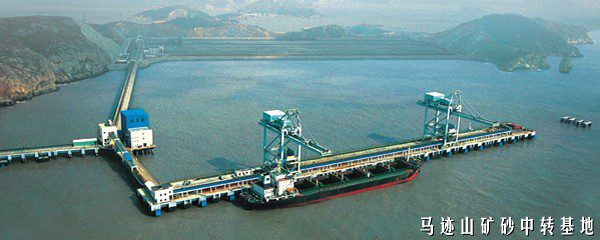1. Port Rules and Regulations of Zhoushan Port
1.1 Navigation Management
– Full compliance with:
• “Maritime Traffic Safety Law of China” (2021 Amendment)
• “Zhoushan Port Navigation Rules 2021” (ZSMSA Regulation No. 3)
• “IMO Resolution A.1156(32)” on VTS guidelines
– Mandatory reporting procedures:
• Initial contact: VHF Ch16 (call sign “Zhoushan VTS”)
• Secondary channels: Ch08 (North sector), Ch72 (South sector)
• Required details: IMO number, last port of call, dangerous goods (if any), defects affecting navigation
– Speed restrictions:
• General areas: ≤12 knots (per Port Notice 2021/05)
• Congested zones (Chart ZS-2022 marked areas): ≤8 knots
• Ecological zones (Shengsi Marine Reserve): ≤6 knots
• Special zones (bridge areas): ≤5 knots
– AIS requirements:
• Continuous transmission within port limits
• MMSI verification during boarding inspections
• Historical data retention for 6 months (per MSA Tech Circular 2020-12)
1.2 Anchorage Regulations
– Designated anchorages (ZSMSA Notice 2020-15):
• Dongjiao (29°58’N 122°15’E): Max LOA 330m, depth 25m
• Xiushan (30°11’N 122°02’E): Max draft 23m, tankers only
• Liuheng (29°45’N 122°08’E): Hazardous cargo, security zone 500m
• New addition: Jintang Anchorage (30°03’N 121°53’E) – Bulk carriers only
– Prohibited areas:
• 500m from submarine cables (Chart ZS-2022 Layer 5)
• 1nm from Zhoushan Cross-sea Bridge (per Bridge Authority Notice)
• Marine sanctuaries (ZSEPB Notice 2021-03)
– Operational requirements:
• Continuous VHF watch on assigned channel
• Engine readiness: 30-minute standby
• Daily position reports at 0800/2000 local time (to VTS)
• Night illumination per COLREGs Rule 30
1.3 Dangerous Cargo Handling
– Regulatory framework:
• IMDG Code (2020 Edition, Amendment 40-20)
• China DG Transport Regulations (MOT Order No. 6/2018)
• Port-specific rules (ZSMSA DG Code 2022)
– Notification matrix:
• Class 1/7: 72 hours pre-arrival + 24-hour update
• Class 2/3/5.1: 48 hours pre-arrival
• Other hazardous: 24 hours pre-arrival
• LNG carriers: 96 hours pre-arrival (special approval)
– Designated terminals:
• Ma’ao Terminal: Explosives (Class 1), max 500T/day
• Tiaozhoumen Terminal: Radioactive (Class 7), ISO 2919 compliance
• Shulanghu Terminal: LNG, requires Q88 system pre-clearance
• New addition: Yadangshan Terminal – Chemical tankers (IBC Code)
1.4 Port Entry/Exit Procedures
– Documentation checklist:
• Valid certificates (minimum 3 months validity)
• Crew list with STCW endorsements (China MSA format)
• Cargo manifest (customs-approved version 2023)
• Pre-arrival inspection report (for vessels >20 years)
– Health protocols:
• Maritime Health Declaration (e-submission via MSA portal)
• Crew temperature logs (past 14 days)
• Vaccination records (yellow fever/malaria if applicable)
2. Compliance and Enforcement
2.1 Inspection Regime
– Inspection statistics (2023 data):
• Routine inspections: 2,187 vessels (34.5% coverage)
• PSC detentions: 41 vessels (1.9% detention rate)
• Most common deficiencies: Fire safety (23%), documentation (19%), pollution prevention (15%)
– Technical verification:
• Life-saving appliances (SOLAS Ch.III, LSA Code)
• Fire protection systems (FSS Code)
• Ballast water records (BWMC Art.9)
• Cargo securing manual (CSS Code)
– Certification audit:
• Continuous Synopsis Record (CSR) verification
• International Air Pollution Prevention (IAPP) Certificate
• Ship Energy Efficiency Management Plan (SEEMP)
2.2 Penalties
– Legal basis:
• “Maritime Traffic Safety Law” Art.95-102
• “Regulations on Prevention of Marine Pollution” Art.68-75
– Penalty schedule (2023 update):
• Navigation violations: ¥10,000-¥100,000
• Pollution offenses: ¥50,000-¥500,000
• False declarations: ¥20,000-¥200,000
• Safety breaches: ¥30,000-¥300,000
– Enforcement actions (2023):
• 89 warning notices issued
• 37 administrative penalties imposed
• 5 criminal cases transferred
2.3 Enforcement Agencies
– Primary authority: Zhoushan MSA (5 district offices)
– Joint operations with:
• China Coast Guard (East Sea Branch)
• Customs Anti-smuggling Bureau (Zhoushan)
• Maritime Border Police
• Ecological Environment Bureau (pollution cases)
3. Safety Provisions
3.1 Emergency Response
– Emergency contacts (official numbers):
• Search & Rescue: +86 580 12395
• Oil spill: +86 580 12369
• Medical emergency: +86 580 120
– Response assets:
• 12 patrol vessels (including 2 60m OPVs)
• 300-ton oil spill capacity (per China NCP)
• 2 emergency tugs (5,000HP each)
• Helicopter medevac (contract with East China Rescue Bureau)
– Drills requirement:
• Quarterly for port operators
• Biannual joint exercises with vessels
• Annual full-scale SAR exercise
3.2 Crew Safety
– Personal protective equipment (PPE):
• SOLAS-approved lifejackets (110% complement)
• Immersion suits for winter operations (Nov-Mar)
• Gas detectors (ATEX certified for tankers)
– Medical provisions:
• Port medical center (24/7, 2 doctors on duty)
• Quarantine rooms at all terminals
• Telemedicine link with Shanghai Maritime Hospital
– Working conditions:
• Maximum working hours per MLC 2006
• Hot work permits required
• Confined space entry procedures
4. Operational References
Operational Limits
– Weather restrictions:
• Beaufort 7: Reduce operations (crane ops ≤50% capacity)
• Beaufort 8: Cease cargo operations
• Beaufort 9: All vessels must depart (except emergency)
• Typhoon Signal No.3: Prepare for evacuation
– Environmental limits:
• Max wave height: 1.5m (general), 1.0m (container ops)
• Min visibility: 1nm (day), 2nm (night)
• Current speed: ≤3 knots for VLCC berthing






